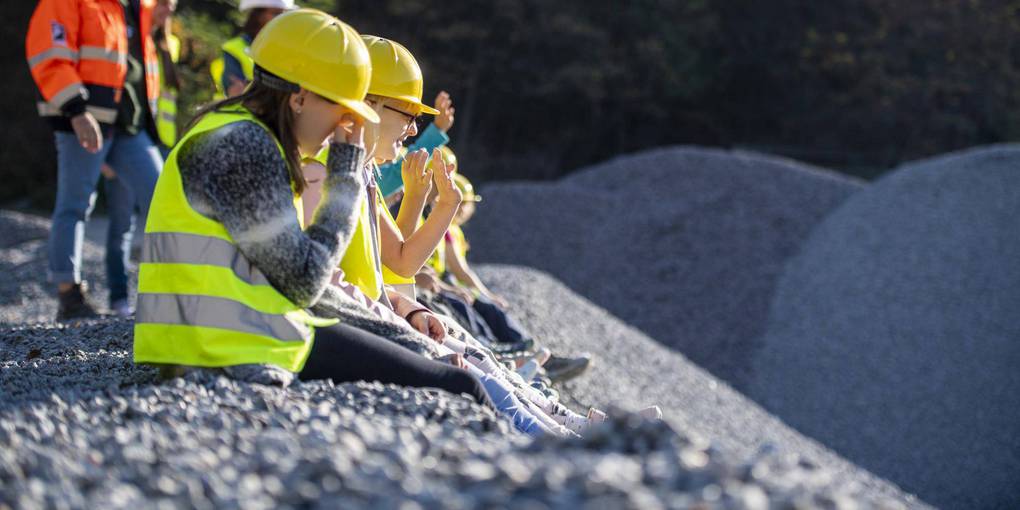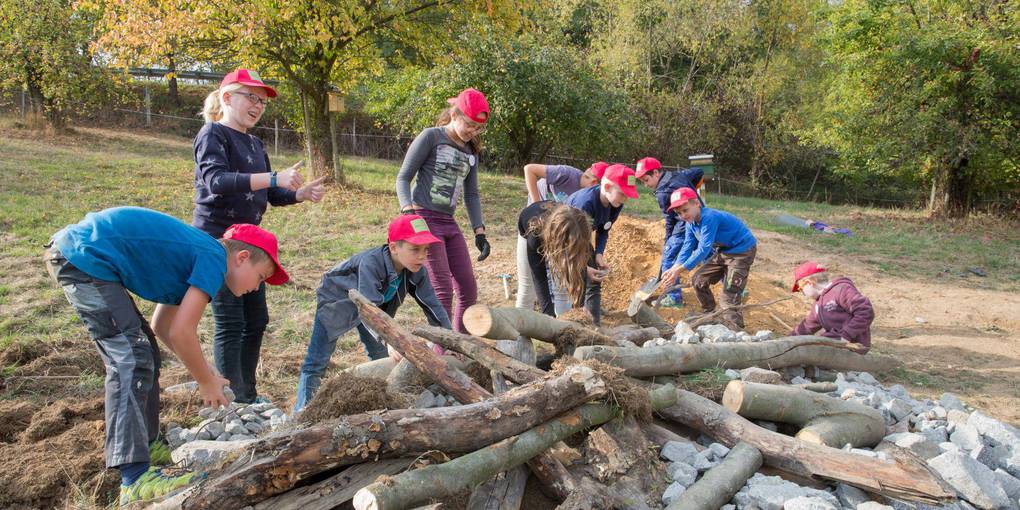
Going on an excursion right after the holidays – that was to the taste of the girls and boys of class 2a of the Eichendorff School in Kirschhausen. In fine weather, the group, together with teacher Angelika Klammt and social pedagogue Ramona Maas, hiked to the quarry of the Röhrig family in Sonderbach – a teaching excursion that is part of the school’s standard program.
Birgitt Bauer was already waiting for the class, then the children were first dressed: each of the children was fitted out with a bright yellow warning vest and a helmet, and finally, they entered the quarry adventure. Past gigantic machines and vehicles, which caused the children to marvel, it went uphill.
The primary school children were also impressed by the steep walls of the quarry: “Whoa, that’s high”, they were impressed. Bauer wanted to know how old the granite was. The fingers rocketed high: “Ten years”, “50”, “20,000 years”, the children estimated. As much as the girls and boys thought about it, they were wrong. The granite was 320 to 340 billion years old – and thus older than the dinosaurs, Bauer said. She explained that the granite was formed after a volcanic eruption, and that it was almost as hard as a diamond. Sarah remembered that she had studied a stone in class that crumbled easily – that was not granite, but a sandstone, which also exists in the region. We walked to a huge pile of split. There, the joy was great when the children learned that they could now slide to their heart’s content. They didn’t have to be told twice. And after everyone had emptied their shoes for the umpteenth time, they were taken off without further ado, and all continued on stockings. “Hey, that tickles”, the children said. Grit instead of a ball pit. “Just pretty dusty”, a girl ranted. Eight-year-old Dziuga even performed a cartwheel down the grit hill, and Jonna (8) thought it was a good idea “that we all took off our shoes”. Finally, the entire group was allowed to take a seat in a huge excavator shovel – the entire class fitted in easily.
Afterwards, we went into the stone crusher, which also gets huge granite chunks small. If the blasted-off pieces are too big for the crusher, they are smashed while still in the quarry with an – at the beginning of the year – about seven metric tons heavy iron ball. Over the months, this ball wears off more and more, weighing only half at the end of the year.
Young eagle owls make themselves comfortable on the machines
Nature and the environment are the issues at the “environmental school” in Kirschhausen. And there are the visits to the quarry, to a piece of Earth’s history in which many rare animal species live such as the eagle owl, the yellow-bellied toad, and the smooth snake.
The girls and boys were fascinated as Bauer told them that they would discover a young eagle owl every once in a while on one of the machines in the morning. According to Bauer, the animals have adapted to the work and the explosions, and feel comfortable. Otherwise, they would not breed there year after year.





